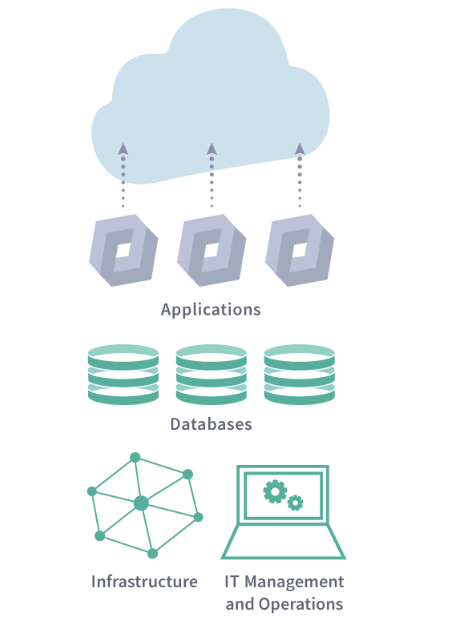
Real-Time Cloud Data Integration
Reduce latency and accelerate data movement within your cloud environments
Looking to integrate data into or within the cloud? Organizations often employ our solution for migrating and integrating:
Data stores from on-premises solutions to a new cloud platform (hybrid cloud)
Data between multiple databases in the same cloud solution (intra-cloud)
Data between two separate cloud solutions (inter-cloud)
Bi-Directional Data Movement for Continuous Cloud Data Integrations
HVR allows you to move your data bi-directionally as you integrate data between on-premises solutions and the cloud. You can move high volumes of data with minimal latency and impact on database performance with our log-based change data capture feature.
With HVR, you get a complete solution for successful and continuous cloud data integrations: Table Creation and Initial Load, Change Data Capture, Data Validation and Repair, and Automated Reporting and Monitoring.
With HVR, you can:
- Reduce latency
- Accelerate data movement
- Ensure data is updated in real-time
A Flexible Solution for Your Common Cloud Data Integration Scenarios
HVR is a solution with a distributed architecture that can maintain the state of every replication channel and route data from one or more sources to one or more targets in unidirectional, bidirectional, or multidirectional setups. HVR is a flexible cloud data integration solution that provides:
High Performance
As your organization moves applications from your on-premises data centers to the cloud, you must continue to deliver the same high performance your users have come to expect. Yet the cloud environment is subject to network communications issues that can cause performance and latency problems. These issues are compounded when uncompressed data volumes are large or arrive rapid-fire and must be integrated quickly. To address these issues, HVR includes capabilities that improves performance. These capabilities include replicating only incremental changes in a non-invasive manner to minimize the load on sources and targets. HVR also minimizes network bandwidth utilization by providing advanced data compression based on proprietary algorithms and specific knowledge of data structures. HVR achieves compression ratios of more than 90 percent.
Security
Because public clouds are multi-tenant, they require added security to keep client data segregated and secure. Data protection should be an integral part of any cloud data integration solution. HVR incorporates data encryption on the wire to safeguard against eavesdropping and authentication to guard against the misuse of services. Support for two-way SSL encryption ensures that data delivery will not be compromised and that source and target data are authentic.
Reliability
Data integration services need to be able to handle cloud outages, maintain integrity, and resume without manual intervention. HVR addresses these issues through two mechanisms. One with backup metadata. And the other mechanism is the primary hub and the backup hub, which shares a disk to make the transaction and state files available on the failover server.
Ease of Set-Up and Management
Data integration should be easy to set-up and manage. HVR offers a GUI-driven management console with context-sensitive online help can minimize the costs of system administration. HVR supports the entire data integration lifecycle from initial/batch loading to change data capture, and as a result, reduces both initial purchase and ongoing training costs.
Automation can further speed and simplify administration; for example, HVR automatically generates DDL to set up a target database schema based on the data source that takes into consideration any required transformations. Such an automated system enables administrators to configure maintenance tasks for lights-out management. Automated online data load and validation functionality ensure that heterogeneous source and target systems continuously remain in sync.








